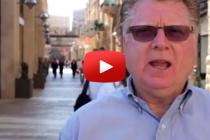Dazzling Highlights of Biblical Rome
From its art and ancient architecture to its unparalleled cuisine, few destinations compare to Rome—The Eternal City. In the premier issue of SOJOURNER, we featured the early Church history of Rome, and since then, have only grown to love this city more. We hope you’ll be informed and inspired by these photos from our most recent trip. Journey with us as we walk through some of the city’s most memorable destinations!
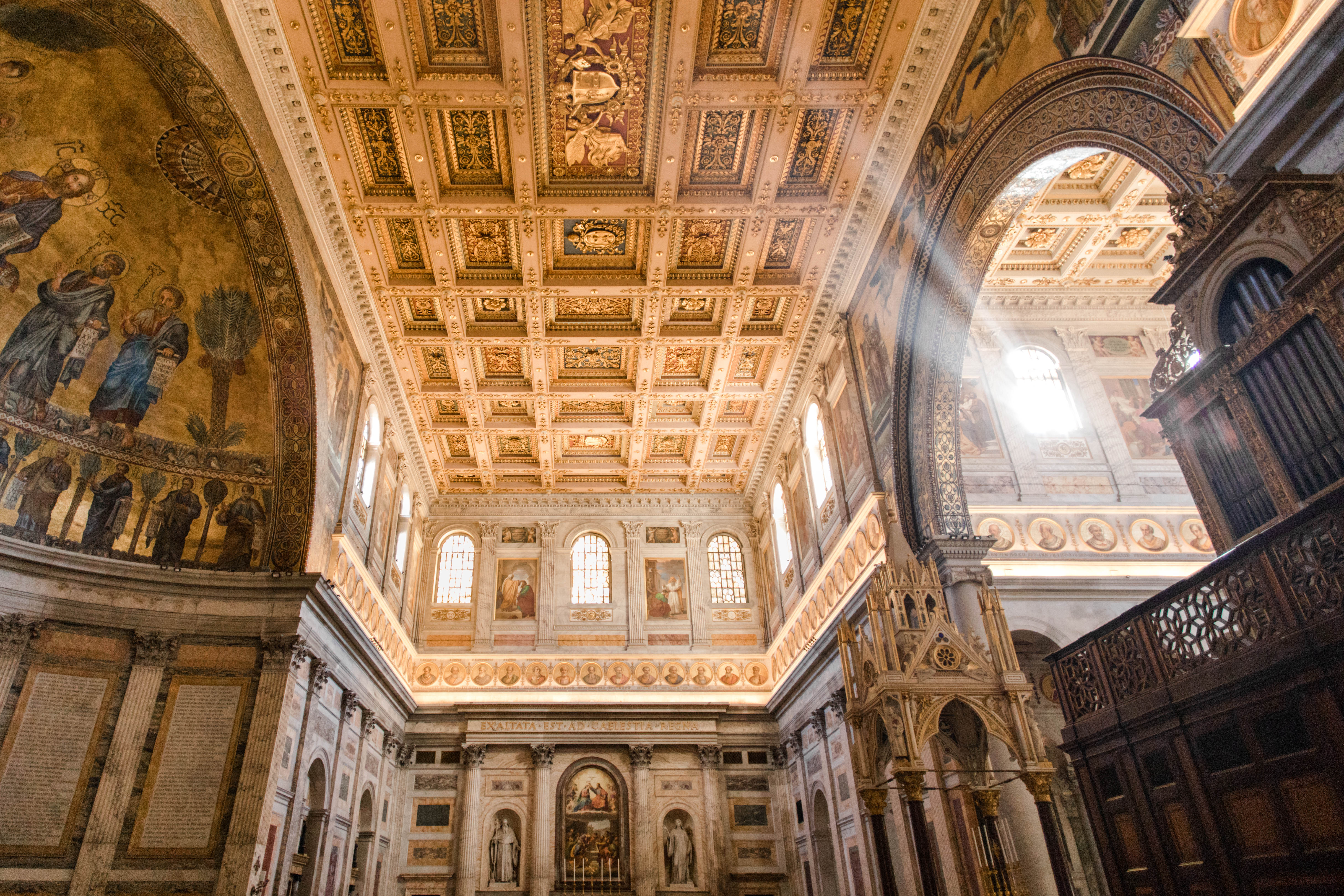
This important Roman Catholic church was built in the 4th century before being almost entirely destroyed in a fire in 1823. The basilica was painstakingly rebuilt over the next two decades and declared a national monument—making it not only one of the most awe-inspiring churches in Rome, but also one of the youngest. Featuring translucent alabaster windows and mosaic portraits of each pope along a single row, St. Paul’s is said to have been erected over the burial site of the Apostle Paul. Prominently displayed are a set of chains traditionally believed to have been used on him during his first century imprisonment under Nero.
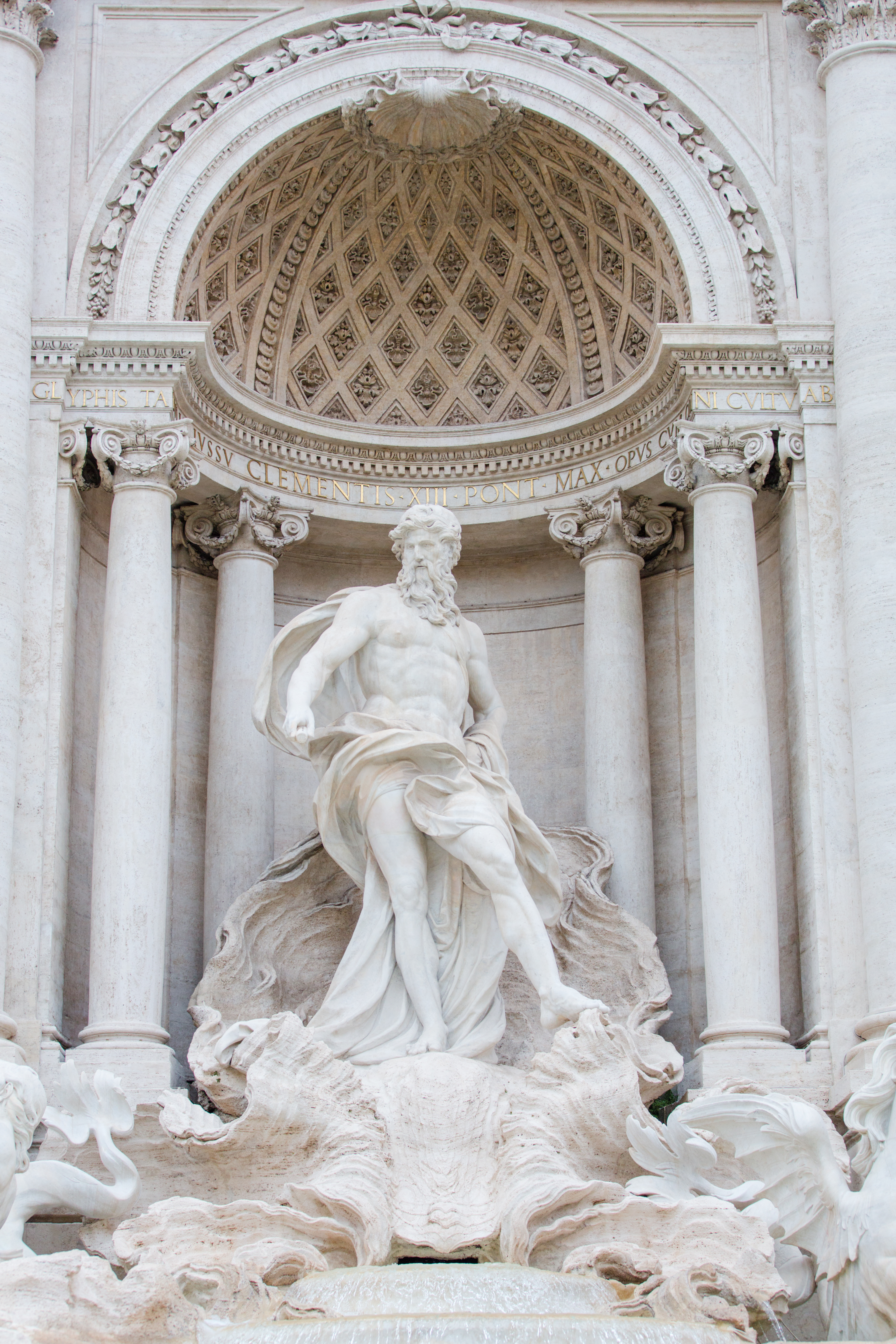
This 18th century theatrical, spring-fed fountain—the largest of 2,000 in the city—is one of Rome’s most popular tourist attractions and among the best-known fountains in the world. It is hailed as a world-class example of Baroque art and architecture. Pictured is one of its many sculpted figures, that of Oceanus, the Titan god.
According to tradition, by tossing a coin backwards into Trevi fountain, a visitor guarantees he or she will return to Rome in the future. The city collects the coins nightly for charity. (For this reason, taking a coin out of the fountain is illegal.)
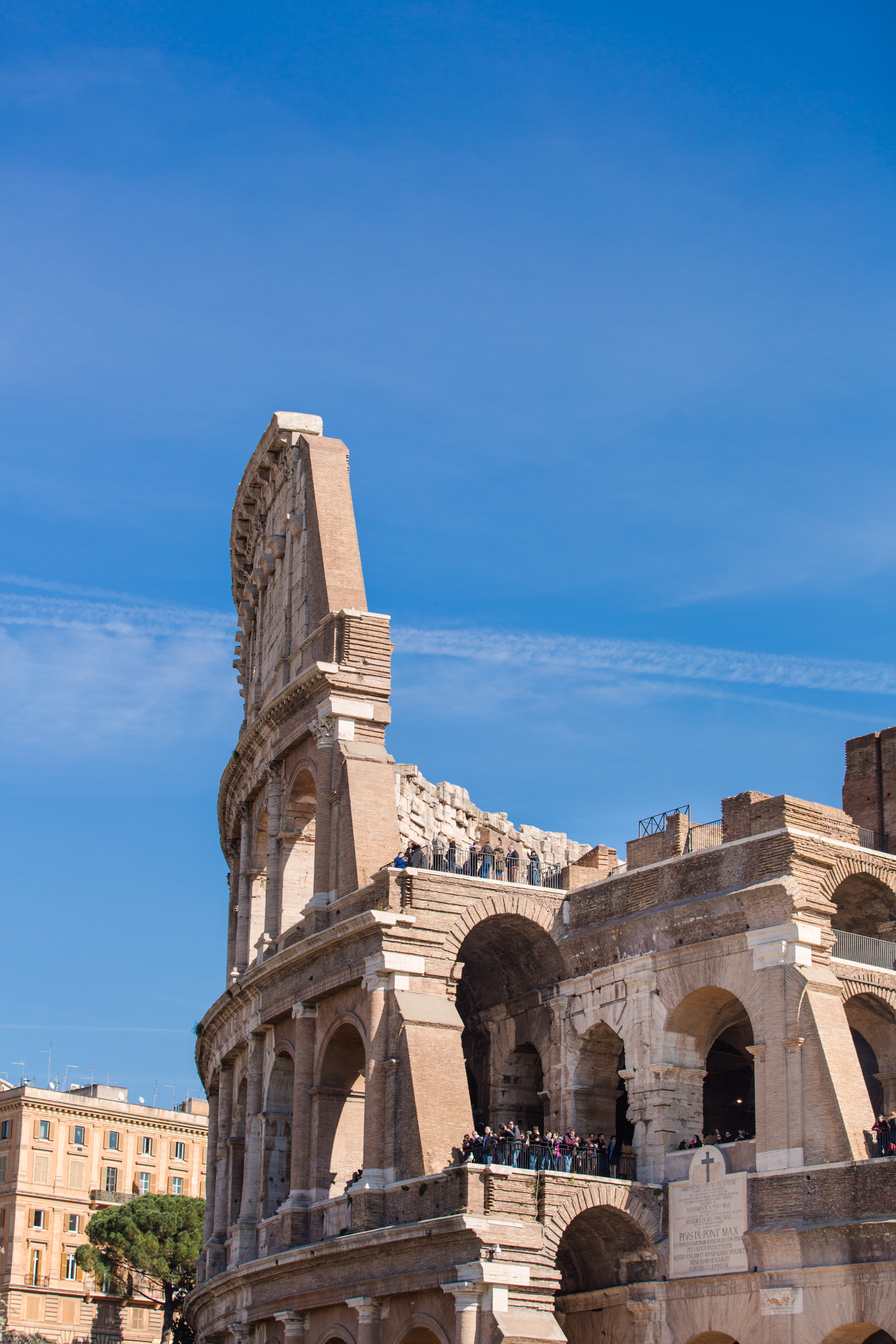
The largest amphitheater ever built and the largest surviving structure from ancient Rome, the Colosseum dates back to the 1st century. It was used for gladiatorial battles and other spectacles—including the martyrdom of large numbers of Believers. As many as 50,000 spectators once gathered here for these events.
The south side of the structure collapsed in 1349 during a massive earthquake. The rubble was used to build a number of other buildings throughout the city.
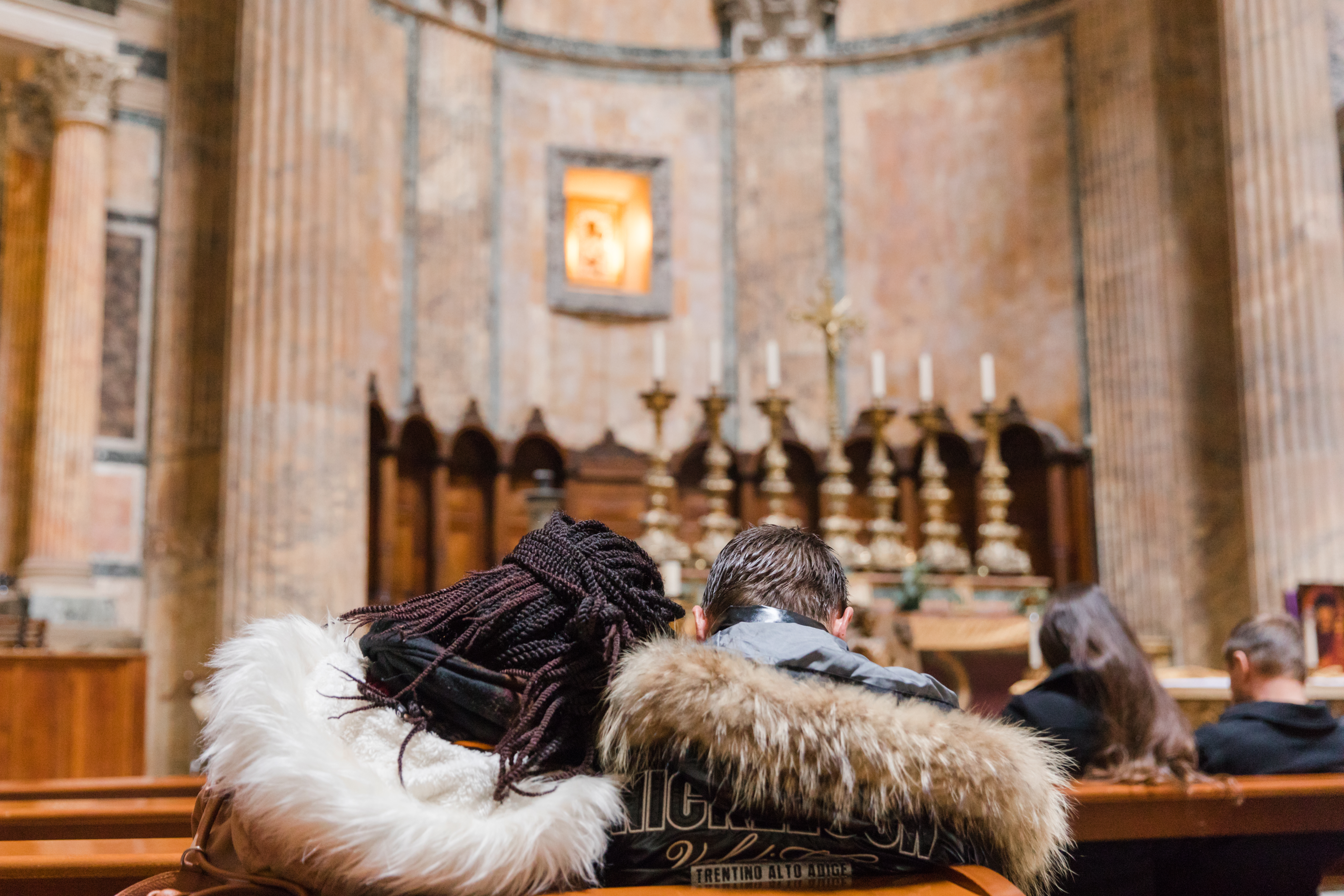
One of the best-preserved ancient buildings in Rome, the Pantheon dates back to the 2nd century, and may be even older. Originally, the impressive domed building was dedicated to all the Roman gods—its name comes from the ancient Greek words for “everything” and “divine”—but in the 7th century, Pope Boniface IV declared it a church rather than a place of pagan worship. This is one of the primary reasons the building was not destroyed during the wars of the Middle Ages.
Sitting beneath its spectacular oculus and domed ceiling (which is nearly 50% larger than the dome of the U.S. Capitol), visitors find the Pantheon to be a quiet respite during a busy day of travel.
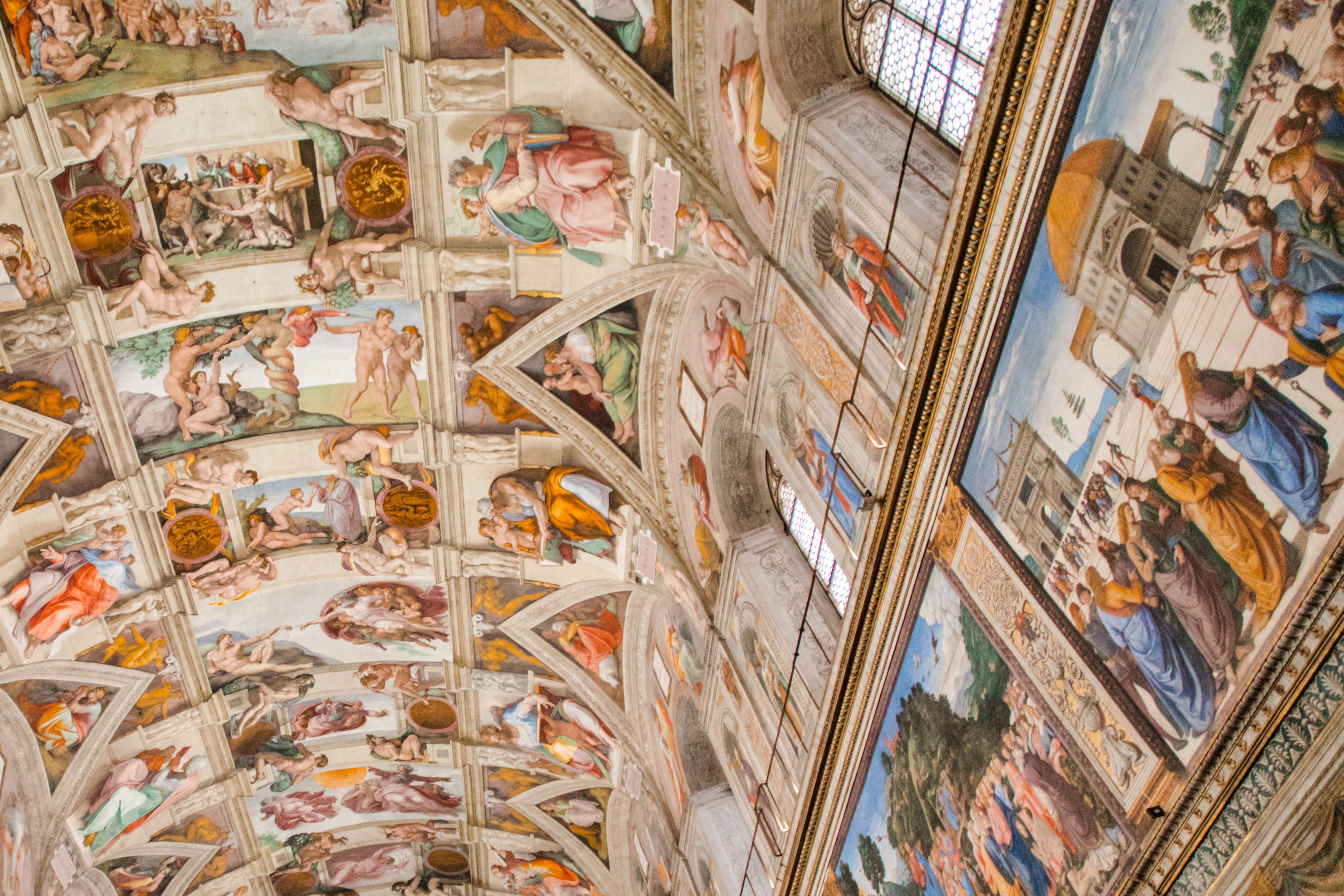
Located in Vatican City, the Sistine Chapel is at the top of almost every visitor’s itinerary. These breathtaking Renaissance frescoes, painted by Michelangelo between 1508 and 1512, are viewed by six million people a year. This image shows part of the famous ceiling. Below it, at any given time, are as many as two thousand people craning their necks to look at this religious masterwork, which is considered to be the most important piece of art in human history.
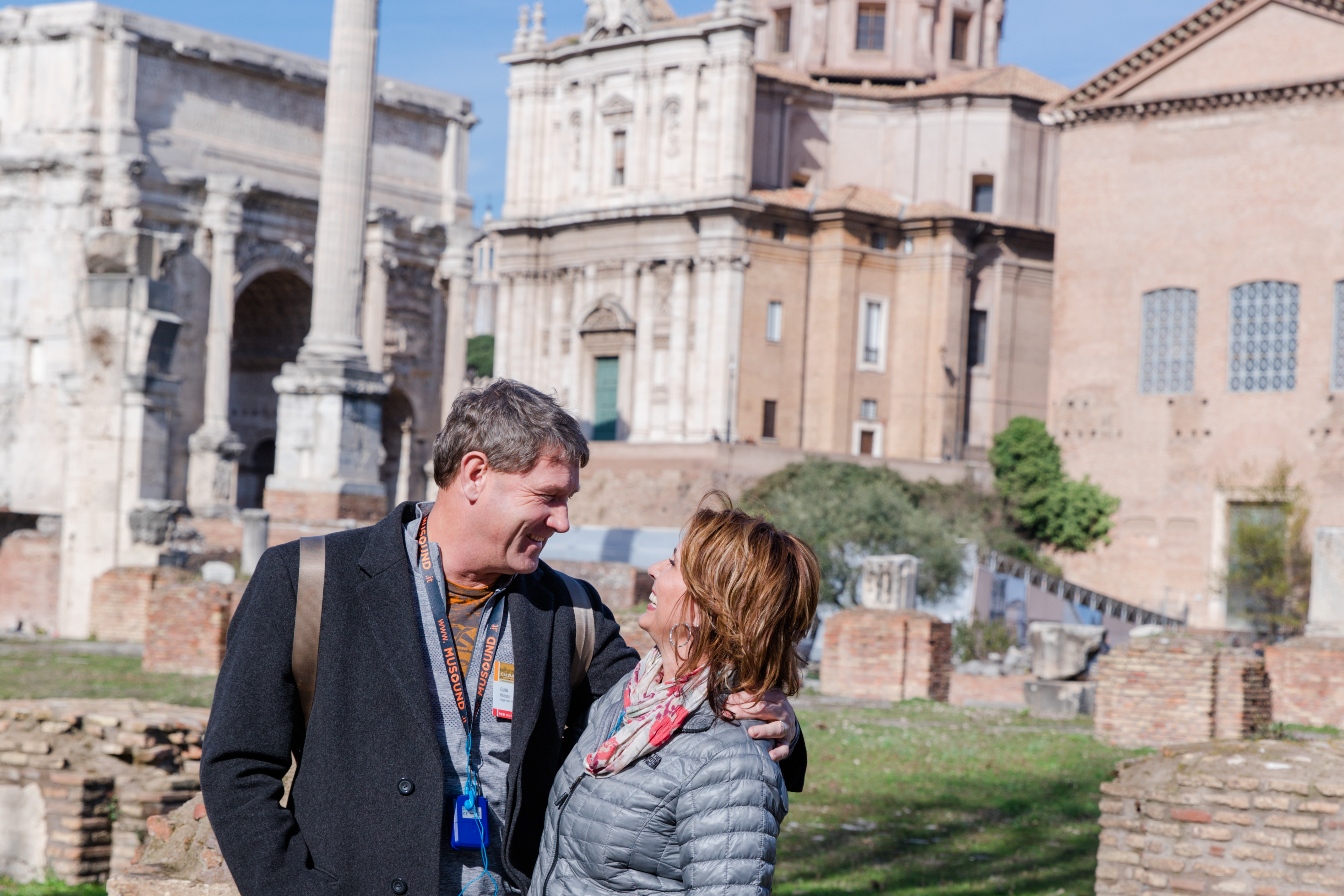
Today, the vast grounds of the Forum hint at the ancient grandeur of the buildings and temples that once filled this complex. Two thousand years ago, this area served as the center of the Roman Empire. Seen behind this couple are a few of its structures, including the free-standing Column of Phocas, the triumphal Arch of Septimius Severus and the windowed Curia Julia. This reddish building, built in 44 B.C., was once the meeting place of the Roman Senate. It remains intact, and visitors can imagine Roman leaders walking across its immaculate mosaic floor.
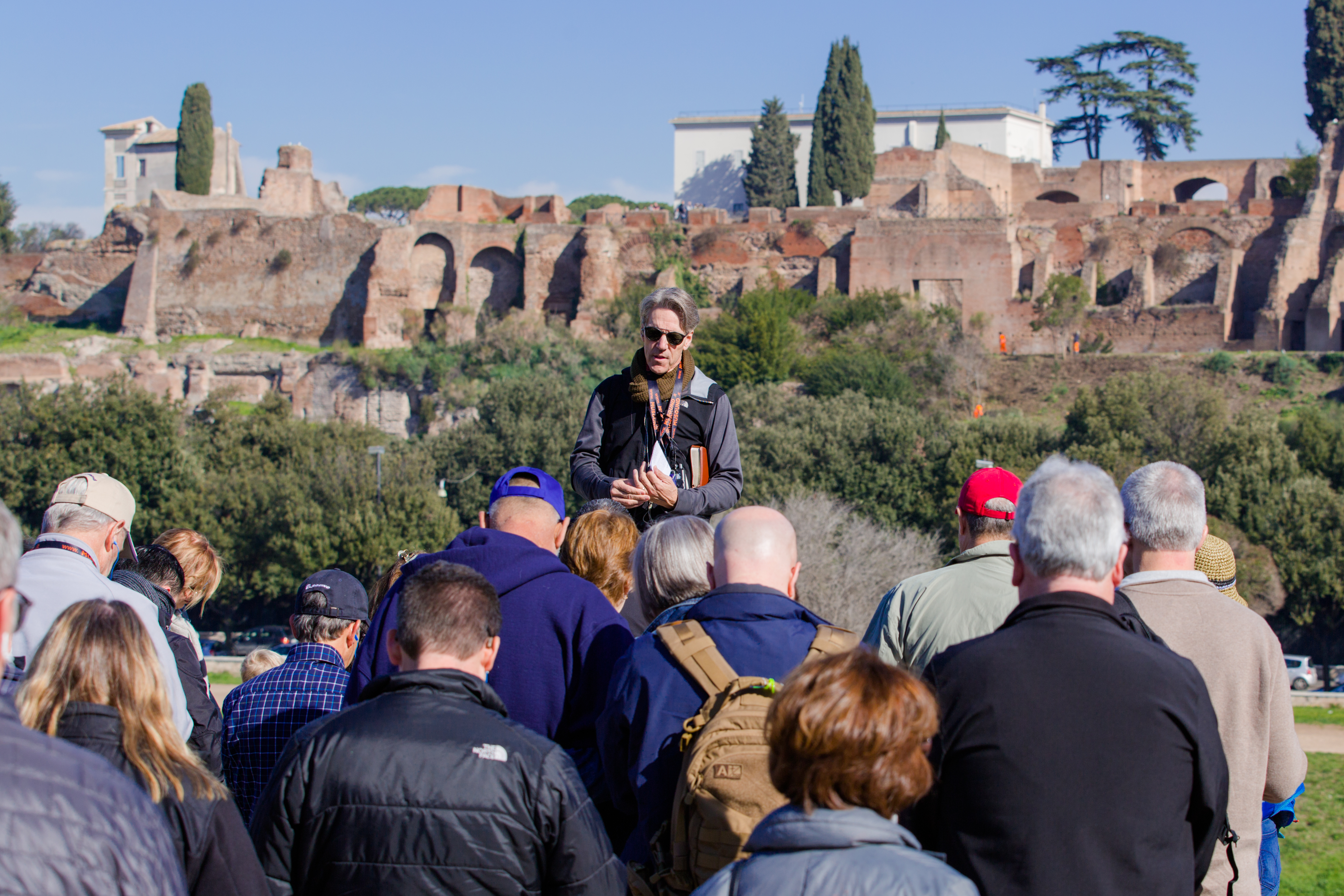
Chariot races were significant parts of life in ancient Rome, and took place in the enormous Circus Maximus, which once held as many as 300,000 spectators. That last known chariot race dates back to the 6th century. Once home to noisy races and boisterous crowds, the Circus is now a much more peaceful place amid the bustle of the city surrounding it. In this photo, Pastor Skip Heitzig leads his group in a time of teaching and prayer.
Rome has long been described as an open-air Museum full of priceless antiquities. With archaeological sites and religious monuments around every corner—and one cathedral after another housing masterful paintings and sculptures—there is no shortage of treasures to be found. We hope to have the pleasure of hosting you in Rome on an upcoming Israel tour, and are confident you’ll find this biblical, cosmopolitan city to be one of the most fascinating you’ve ever visited.






